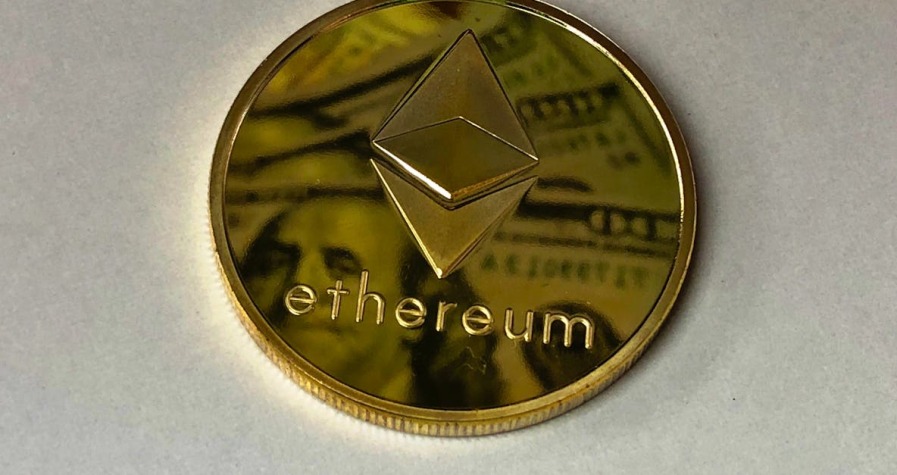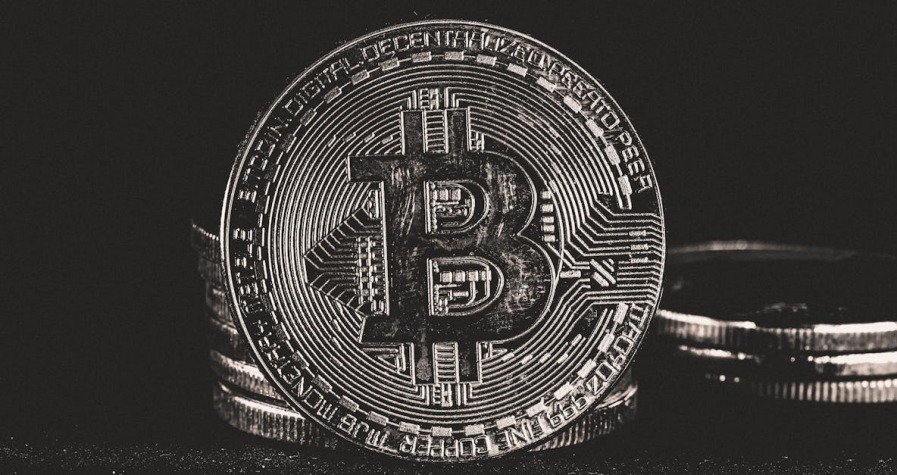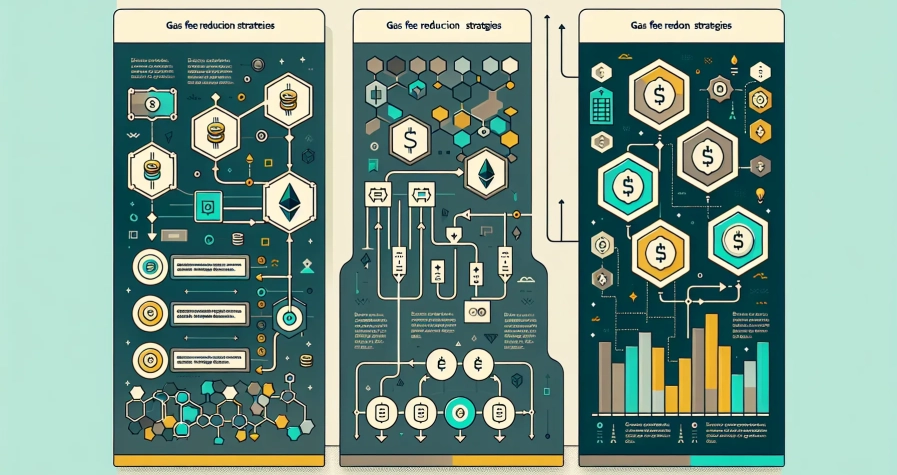Whether you’re managing your daily spending or tracking your cryptocurrency investments, knowing how to check your wallet balance is essential for staying on top of your finances. With various types of wallets available today – from traditional bank accounts to digital payment apps and crypto wallets – the process can vary significantly depending on which platform you’re using.
Understanding the different methods to monitor your wallet balance helps you make informed financial decisions and avoid unwanted surprises like overdraft fees or insufficient funds. Each wallet type offers unique ways to access your balance information, whether through mobile apps, websites, ATMs, or physical statements.
You’ll discover straightforward steps to check balances across multiple wallet platforms, ensuring you’re always aware of your available funds and can manage your money more effectively.
Understanding Different Types of Wallets
Wallet balance checking methods vary significantly across different wallet categories. Each wallet type requires specific approaches and tools to monitor your available funds effectively.
Physical Wallets and Cash Management
Physical wallets contain tangible currency that you count manually to determine your balance. Traditional leather wallets, money clips, and purses store banknotes and coins without electronic tracking systems.
Counting cash involves separating denominations into groups—£50 notes, £20 notes, £10 notes, £5 notes, £1 coins, and smaller denominations. You calculate totals by multiplying each denomination count by its face value, then adding all amounts together.
Envelope budgeting systems help track physical money allocation across different spending categories like groceries, transport, and entertainment. Label each envelope with its purpose and designated amount to maintain clear spending boundaries.
Receipt tracking complements physical wallet management by documenting cash transactions. Store receipts in designated wallet compartments or separate containers to monitor spending patterns and remaining balances.
Digital Wallets and E-money
Digital wallets store electronic money through mobile applications and online platforms. PayPal, Apple Pay, Google Pay, and bank-issued apps provide instant balance information through user dashboards.
Mobile banking applications display current account balances, transaction histories, and available credit limits. Most UK banks including Barclays, HSBC, and Santander offer real-time balance updates through their smartphone apps.
Contactless payment cards connect to bank accounts and display balances through ATM machines or online banking portals. Chip and PIN transactions automatically update your available balance within banking systems.
Prepaid cards maintain separate balances from your main bank accounts. Oyster cards, gift cards, and travel money cards require specific checking methods through card readers, websites, or mobile applications provided by card issuers.
Cryptocurrency Wallets
Cryptocurrency wallets manage digital assets through blockchain technology and display balances in specific coin denominations. Hardware wallets, software wallets, and exchange-hosted wallets each provide different balance checking interfaces.
Hardware wallets like Ledger and Trezor devices require connection to computer applications to view cryptocurrency holdings. These cold storage solutions display Bitcoin, Ethereum, and altcoin balances through manufacturer-provided software interfaces.
Software wallets including Exodus, Electrum, and MetaMask show real-time cryptocurrency values through desktop and mobile applications. Public wallet addresses enable balance verification through blockchain explorers without accessing private keys.
Exchange wallets on platforms such as Coinbase, Binance, and Kraken provide balance information through web dashboards and mobile apps. Trading balances reflect both available cryptocurrency amounts and their current market values in pounds sterling.
Paper wallets store cryptocurrency private keys offline but require blockchain explorer websites to check balances. Enter your wallet’s public address into explorers like Blockchain.info or Etherscan.io to view current holdings and transaction history.
Checking Traditional Bank Account Balances
Traditional bank accounts offer multiple convenient methods for checking your current balance and transaction history. These established banking institutions provide secure access through various channels to help you monitor your finances effectively.
Online Banking Platforms
Online banking platforms provide comprehensive account management through your bank’s official website. You’ll access your account by logging in with your username and password through a secure portal. Once authenticated, you can navigate to the account section to view your current balance, recent transactions, and detailed account activity.
Most UK banks including Barclays, HSBC, Lloyds, and Santander offer robust online platforms that display real-time balance information. These platforms typically show pending transactions, available balance, and cleared funds separately. You can also download statements, set up standing orders, and review transaction categories through these secure web interfaces.
Mobile Banking Apps
Mobile banking apps deliver instant balance checking directly to your smartphone or tablet device. You’ll download your bank’s official app from the App Store or Google Play, then sign in using your existing online banking credentials. These apps provide up-to-date balances, transaction history, and account activity with convenient fingerprint or face recognition authentication.
UK banks such as Barclays, HSBC, Lloyds, and Monzo have developed feature-rich mobile applications that sync automatically with your account. The apps display notifications for transactions, spending categorisation, and balance alerts. Many include budgeting tools, nearby ATM locators, and quick payment features alongside standard balance checking functionality.
ATM Balance Enquiries
ATM balance enquiries offer 24-hour access to your account information without requiring internet connectivity. You’ll insert your debit or ATM card into any fee-free machine operated by your bank, then enter your PIN number. After authentication, select the balance enquiry option from the main menu to view your current balance on screen.
Most ATMs provide options to print a mini-statement showing your current balance and recent transactions. UK banking networks including Link and major bank ATMs display balances immediately without charging fees when you use your own bank’s machines. Some ATMs also show available overdraft limits and pending transaction amounts alongside your cleared balance.
How to Check Digital Wallet Balances
Digital wallets offer convenient ways to check your balance through their respective platforms. Each provider uses different methods and interfaces to display your available funds and transaction history.
PayPal Balance Verification
PayPal displays your current balance prominently on the homepage when you log into your account. Access your balance through the PayPal mobile app or website by entering your login credentials. The balance appears immediately after authentication, showing both your PayPal balance and any connected bank account information. Your transaction history appears below the balance section, providing detailed records of recent payments and receipts.
Apple Pay and Google Pay
Apple Pay requires opening the Wallet app on your iPhone and tapping your connected card to view balance information. Connect your account to the card by following the “Get Account Balance & Activity” steps, which involve authenticating with your bank or card issuer. Supported UK banks include Barclays, HSBC, Monzo Bank and others. Your balance syncs across Apple devices using the same Apple ID.
Google Pay operates differently in the UK compared to the US market. Check your balance by logging into wallet.google.com and selecting Payment Methods, then Money in Google Pay. However, Google Pay primarily functions as a payment facilitator linked to your existing cards in the UK. View actual bank balances through your respective banking apps rather than the Google Pay interface.
Revolut and Monzo Apps
Revolut and Monzo display your available balance immediately when you open their dedicated apps. These digital banking platforms integrate wallet functionality with traditional banking features. Access detailed transaction histories, budgeting tools and instant spending notifications through the main dashboard. Both apps require initial setup where you add payment methods and complete authentication procedures before balance features become available.
Monitoring Cryptocurrency Wallet Balances
Cryptocurrency balances are publicly recorded on their respective blockchains, representing the sum of all tokens held at your specific public address. You can monitor these balances through several reliable methods without compromising your wallet’s security.
Blockchain Explorers
Blockchain explorers are online tools that display real-time wallet balances and transaction histories by searching public addresses. You enter your wallet’s public address into platforms like Etherscan for Ethereum or Blockchain.com Explorer for Bitcoin to view current holdings instantly. These explorers fetch data directly from blockchain networks, providing transparent access to:
- Current token balances across different cryptocurrencies
- Complete transaction history with timestamps and amounts
- Smart contract interactions and token transfers
- Network fees paid for each transaction
The explorers update automatically as new blocks are added to the blockchain, ensuring you always see the most current information without requiring any wallet software installation.
Wallet Applications and Interfaces
Wallet applications provide built-in balance checking features that connect directly to blockchain networks through secure APIs. Popular wallets like Cryptonow and MetaMask display your current holdings prominently on their main interface after you log in or unlock your wallet. You can check balances by:
- Opening your wallet application and viewing the dashboard
- Scanning QR codes of public addresses for quick balance verification
- Switching between different cryptocurrency networks within the same interface
- Accessing detailed transaction histories and pending transfers
These applications fetch balance data in real-time from blockchain networks, offering convenience and security since they only require your public address for balance queries.
Portfolio Tracking Tools
Advanced portfolio trackers aggregate balances across multiple wallets and exchanges, providing comprehensive financial overviews of your cryptocurrency holdings. Tools like CoinLedger and CoinTracker connect to various blockchain networks and exchange APIs to monitor your entire portfolio automatically. These platforms offer:
| Feature | Benefit |
|---|---|
| Multi-wallet aggregation | View all holdings in one dashboard |
| Real-time balance updates | Automatic synchronisation across platforms |
| Tax reporting tools | Generate reports for HMRC compliance |
| ROI calculations | Track profit and loss across investments |
| Price alerts | Notifications for significant balance changes |
Portfolio trackers maintain security by requiring only your public addresses, never requesting private keys or wallet access credentials. They provide automatic alerts for incoming and outgoing funds whilst calculating your total portfolio value across different cryptocurrencies and fiat currencies.
Setting Up Balance Alerts and Notifications
Balance alerts keep you informed about your financial activity without constantly checking your wallet manually. These automated notifications protect you from overdrafts and help you monitor spending patterns across different platforms.
SMS and Email Alerts
SMS alerts deliver instant balance notifications directly to your mobile phone when your account reaches predetermined thresholds. Banks typically offer these text-based notifications for balances falling below £10, £50, £100, or custom amounts you specify through your online banking portal.
Email alerts provide detailed balance information and transaction summaries delivered to your inbox. These notifications include comprehensive data such as available balance amounts, recent transaction details, and account activity timestamps that SMS messages cannot accommodate due to character limitations.
Setting up these alerts requires accessing your bank’s notification preferences through their mobile app or website. You specify trigger amounts, select notification types (low balance, large transactions, or suspicious activity), and confirm your preferred contact details for receiving alerts.
| Alert Type | Delivery Time | Information Included | Best Used For |
|---|---|---|---|
| SMS | Instant | Balance amount, transaction value | Urgent notifications |
| 1-5 minutes | Detailed transaction history, account summaries | Comprehensive monitoring | |
| Both | Variable | Complete coverage of account activity | Maximum security |
Push Notifications on Mobile Apps
Push notifications provide immediate balance updates through your smartphone’s notification system when using digital wallet and banking applications. These alerts appear on your lock screen and notification panel without requiring you to open the specific app.
Mobile banking apps like Monzo, Revolut, and Starling Bank send push notifications for various balance-related activities including direct debits, incoming payments, and spending category limits. You customise these notifications by setting spending thresholds, transaction amount minimums, and specific merchant categories that trigger alerts.
Cryptocurrency wallet applications such as Coinbase and Binance offer push notifications for significant balance changes, price movements affecting your portfolio value, and security-related activities like login attempts from new devices. These notifications help you respond quickly to market fluctuations or potential security threats.
Configuring push notifications involves enabling permissions in your device settings and customising alert preferences within each wallet application. You select notification frequency, minimum transaction amounts for alerts, and specific account activities that warrant immediate attention.
Best Practices for Wallet Security
Securing your digital wallet requires implementing multiple protective measures to safeguard your financial information and prevent unauthorised access. These security practices work together to create robust protection for your wallet balance checking activities and transaction data.
Regular Balance Monitoring
Checking your wallet balance frequently helps you detect unauthorised transactions and suspicious activity before significant damage occurs. Review your transaction history at least weekly to identify any payments you didn’t authorise or recognise.
Set up automatic balance alerts to notify you when your account drops below specific thresholds or when large transactions occur. Most digital wallets and banking apps allow you to customise these notifications, sending SMS messages or push notifications when your balance changes by predetermined amounts.
Monitor transaction patterns to establish what constitutes normal spending behaviour for your accounts. Flag any unusual activity immediately, such as multiple small transactions from unfamiliar merchants or single large withdrawals that don’t match your typical spending patterns.
Keep payment information current across all your digital wallets to ensure accurate balance reporting and prevent security vulnerabilities. Outdated card details or expired payment methods can create gaps in your transaction monitoring that fraudsters might exploit.
Protecting Your Login Credentials
Create strong, unique passwords for each wallet account using combinations of letters, numbers and special characters that exceed 12 characters in length. Avoid using the same password across multiple financial accounts, as this creates vulnerability if one account becomes compromised.
Enable multi-factor authentication (MFA) on all wallet applications that support this feature. Use Face ID, fingerprint scanning or app-based authenticators rather than SMS verification when possible, as these methods provide stronger security against interception attacks.
Never share your login credentials through email, messaging apps or phone calls, even if the request appears to come from your bank or wallet provider. Legitimate financial institutions don’t request passwords or PINs through unsecured communication channels.
Update your passwords every 90 days and immediately change them if you suspect any security breach or receive notifications about suspicious login attempts. Store passwords in reputable password managers rather than writing them down or saving them in browsers on shared devices.
Enable biometric authentication features like fingerprint or facial recognition scanning when available, as these provide additional security layers beyond traditional passwords. These authentication methods are unique to you and significantly harder for unauthorised users to replicate or bypass.
Conclusion
Staying on top of your wallet balance isn’t just about knowing how much you can spend—it’s about taking control of your financial future. Whether you’re managing traditional bank accounts digital payment apps or cryptocurrency wallets the methods outlined above give you the tools to monitor your funds effectively.
Remember that each wallet type requires different approaches and security considerations. Regular balance checking combined with proper security measures and automated alerts creates a comprehensive system that protects your finances whilst keeping you informed.
By implementing these practices you’ll avoid unexpected fees catch suspicious activity early and make more informed spending decisions. Your financial wellbeing depends on staying vigilant and these balance-checking methods are your first line of defence against financial surprises.
Frequently Asked Questions
What types of wallets can I check balances for?
You can check balances for various wallet types including traditional bank accounts, digital payment apps (PayPal, Apple Pay, Google Pay), mobile banking apps, and cryptocurrency wallets. Each type uses different methods for balance checking, from online banking portals and mobile apps to blockchain explorers for crypto wallets. Understanding these different platforms helps you manage all your finances effectively.
How do I check my bank account balance?
You can check your bank balance through online banking by logging into your bank’s website, using mobile banking apps on your smartphone, or visiting ATMs for 24-hour access. These methods provide real-time balance information, recent transactions, and account activity. Mobile apps often include additional features like notifications and budgeting tools for better financial management.
What’s the easiest way to check digital wallet balances?
Digital wallets like PayPal display balances prominently on your homepage after logging in. Apple Pay requires opening the Wallet app and authenticating with your bank. For apps like Revolut and Monzo, balances appear immediately upon opening. Each platform has its own interface, but most provide instant access to balance information and transaction histories.
How can I monitor cryptocurrency wallet balances?
You can check crypto balances using blockchain explorers by entering your public wallet address, through wallet applications like MetaMask, or using portfolio tracking tools like CoinTracker. These methods show real-time balances and transaction histories. Advanced tools can aggregate balances across multiple wallets and exchanges, providing comprehensive overviews of your crypto holdings.
Should I set up balance alerts and notifications?
Yes, setting up balance alerts helps you monitor your finances without constant manual checking. You can configure SMS, email, or push notifications through your banking apps or wallet platforms. These alerts notify you when balances reach certain thresholds or when significant transactions occur, helping you detect suspicious activity and maintain better financial awareness.
What security measures should I follow when checking wallet balances?
Always use strong, unique passwords and enable multi-factor authentication for all your financial accounts. Regularly monitor your balances to detect suspicious activity, keep your login credentials secure, and use biometric authentication when available. Avoid checking balances on public Wi-Fi networks and ensure you’re using official banking apps or websites to protect your financial information.









